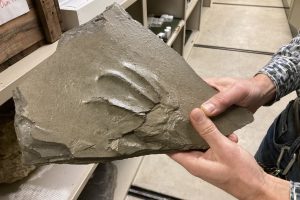
This story is part eight of the AL.com series “Ancient Alabama,” examining the natural forces that made Alabama what it is over the past 500 million years, and how those forces still shape the state today.
A loud air-horn siren rings out, echoing over a disappearing hillside in Jefferson County and a half-dozen or so workers assume safety positions to prepare for the blast.
The hill, part of a surface coal mine north of Birmingham, has been about half blasted away by the mining company to get at the rich seam of black coal beneath. Now another chunk is about to fall.
There’s a loud bang or “shot” as the strategically placed charges, drilled into the rock face, explode. Cascades of rock go tumbling into the new valley beneath and a cloud of dust rolls out from the blast to envelop the entire valley.
As soon as the workers can see again, they reemerge and begin hauling away the spoil – the undesired rocks that happen to be sitting on top of the coal, deposited over a span of about 300 million years.
A little further down the mine, in a spot that had been blasted earlier, miners go back to using bulldozers and track hoes to scrape up the layer of coal and load it onto trucks to be washed, processed and sold.
The coal now is a hard black layer of rock that takes massive equipment to dig out, but 300 million years ago, it was the bog-like surface of a massive swamp, featuring 150-foot trees, massive insects and dozens of reptiles and amphibians that paleontologists can mainly only study based on tracks that were preserved in the bog.
It’s a world scientists are still working to understand, based on the imprints and footprints left behind in an ancient swamp.
Real the full article at al.com’s website.